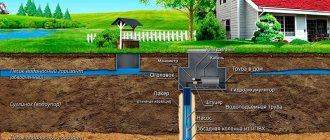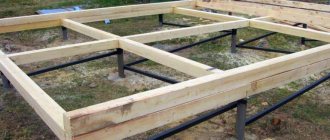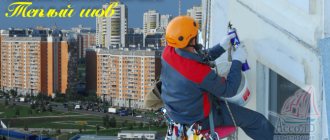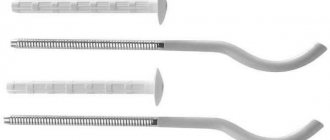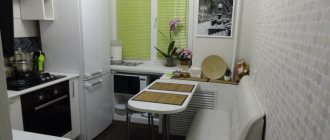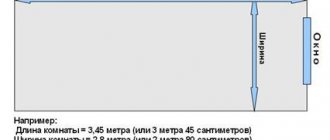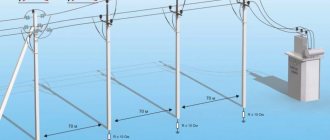- Laws and rules for the location of buildings
- How to take measurements correctly
- Location of the house on the site according to the standards
- Standards for the location of other buildings
- Other requirements and standards for site planning
- Penalties for non-compliance
Before starting active development, each owner needs to study the rules for the location of buildings on a land plot.
This will allow you to subsequently avoid conflicts with neighbors and all kinds of penalties from authorized bodies. Today we will talk about how to properly place structures.
Laws and rules for the location of buildings
To avoid unnecessary questions, we note that the current standards were created taking into account the experience of operating structures and were developed specifically to ensure the safety of health and life. That is, you need to follow the norms not because someone just invented them, this is a real necessity that can save you a lot of nerves, strength and health.
All standards for the location of the house and other structures on the site, which we will talk about, are mandatory or advisory in nature. The first ones must be fulfilled, the second ones - at the request of the owner. The latter include, for example, requirements that were previously in force but were cancelled.
What parameters affect calculations
In order to correctly carry out the calculation to calculate the distance between any lamps (even for security and emergency plans) on the ceiling, you must first evaluate their design features.
Spotlight design
The spotlight has a built-in housing that easily fits into structures with a suspended or plasterboard ceiling. Note! The design of the plasterboard or suspended ceilings themselves for different rooms (bedroom, bathroom, etc.) will be installed according to the same principle. Thus, if the room has a suspended ceiling structure, then installing a spotlight in it will take a minimum of time and effort. It is also worth noting that such lighting devices come in two types:
- built-in;
- invoices.
If built-in models require a suspended ceiling structure, then surface-mounted spotlights can be mounted on absolutely any surface, which makes them universal. It is precisely these lamps that can be found today in many public spaces, as well as at production and industrial facilities in the role of general, work or emergency lighting.
To place such a lamp, you only need a standard set of fasteners that will come with it. At the same time, do not forget that the very location of the lamps on the ceiling may be different. Here everything depends on the purpose of both the premises and the lighting system as a whole or its individual elements. This aspect must be taken into account in your calculations. Options for the location of lighting fixtures may be as follows:
- at equal intervals from each other. In this situation, they will create general and uniform lighting, preventing the appearance of shadows and poorly lit areas in the room;
Uniform placement of lamps
- zonal. This involves a concentration of lighting fixtures for better and more complete illumination of a specific area.
Note! In production, such a placement scheme is used to illuminate the work area or the place of each worker, and in the house - to visually delimit the space of the room, as well as for decorative purposes.
Zonal placement of lamps
It is these placement options that the calculation should be based on.
Location of the house on the site according to the standards
The rules for the location of a residential building on a site are regulated by several documents, namely:
- SP 42.13330.2016;
- SP 53.13330.2011;
- SP 30-102-99;
- PZZ of local government.
In accordance with these documents, the house must be located in accordance with the following requirements:
- at least 3 meters from the neighbors’ fence;
- at least 5 meters from the red line of the street;
- at least 3 meters from the red line of passages.
The roof of the building must be built in such a way as to completely prevent water from draining or snow falling onto the territory of neighbors.
When placing a building, it is also necessary to comply with existing fire safety distances.
Standards for the location of other buildings
The standards regulate not only the location of residential properties, but also the placement of buildings for other purposes on the site.
Bath
This is a building for economic purposes, the placement of which has the following requirements:
- at least 5 meters to the red line of the road;
- at least 1 meter from the neighbors’ territory;
- at least 6 meters from the windows of neighbors’ residential buildings.
The recommended distance from the bathhouse to a residential building on the same site is 8 meters.
Garage
Standards for garage location on the site:
- at least 1 meter from neighbors’ territory;
- at least 6 meters from the windows of neighbors’ residential buildings;
- compliance with fire safety requirements.
Upon receipt of approval, an exit from the garage can be created at the border of the site.
Well
In accordance with current regulations, the well must be located on the site so that it:
- stood no less than 4 meters from the neighbors’ fence;
- located away from large trees;
- was located no less than 15 meters from outbuildings;
- was at least 30 meters from the septic tank;
- was located no closer than 300 meters to major railways and highways.
Other buildings
Almost any structures placed on the site must comply with current regulations. Let's look at the most common cases:
Boiler room
Since the boiler room is an object of increased fire danger, its placement on the site, including its location to other structures, must be coordinated with the responsible services.
In this case, a fire extinguisher, sand and other essential tools necessary to fight fires should be located nearby.
Greenhouses, chicken coops and other outbuildings
Sheds must be placed on the site in accordance with the following standards:
- the distance to the fence is at least 1 meter;
- the distance to residential buildings is at least 3 meters.
Facilities for keeping animals are located at a distance from cellars and composting facilities - no closer than 4 meters.
The only exception is the dog house. It can be placed at a distance of 1 meter from any structure.
Distances from boundary
In accordance with the current standards for the location of objects on the individual housing construction site, the distance from the boundary to the objects should be:
- 3 meters - for residential buildings;
- 4 meters - for sheds and animal housing facilities;
- 1 meter - for a garage;
- 2.5 meters - for baths and toilets;
- 4 meters - for large trees;
- 2 meters - for medium trees;
- 1 meter - for bushes.
The actual calculations
Schematic representation of the room
Determining the distance needed to install lighting fixtures on a ceiling (regular, suspended or plasterboard) comes down to figuring out how many lamps will need to be installed in the room (bedroom, bathroom, etc.). From this alone the distance between adjacent lamps will be calculated so that they can all fit in the room. Thus, for the calculation we need to know:
- type of lamps installed in the room;
- the power that the lamp has;
- the total area of the room in which the selected light bulbs and fixtures will be placed.
Knowing these three values, you can already make a competent calculation of the distance that should be between the selected lighting fixtures. But do not forget that before the calculation it is necessary to calculate such a parameter as the number of lamps themselves. The algorithm of actions in this case is as follows:
- find out the power of the lamp;
- Next, measure the area of the existing room (multiplying the length by the width);
Note! If the room has a non-standard shape, then special formulas must be used to calculate its area.
- Next we multiply the area by the power. Let's remember this number;
- then we find out its light emission in the device passport;
- after this, you need to divide the light emission power by the figure we got by multiplying the area of the room and the power of the lamp.
The resulting number (can be rounded up) will reflect the number of lighting fixtures that need to be installed in this room. Calculating the distance between the lighting installations themselves is quite easy. To do this, you need to know that the lamps on the ceiling should be placed evenly. When zoning a room, some of the light bulbs can be placed a little more closely. By maintaining the sequence of calculations, you will be able to independently carry out all the necessary calculations correctly and without any problems and ultimately obtain an accurate figure. In this case, the error in your calculations will be minimized.
Other requirements and standards for site planning
In addition, when determining the permitted location of buildings on a site in 2022, existing sanitary, fire and environmental standards must be taken into account.
Sanitary
These are standards designed to protect the health and lives of people, so they cannot be neglected. In accordance with them it is necessary:
- keep the house and cellar 12 meters away from animal sheds and outdoor toilets;
- ensure a distance of 8 meters or more between the house/cellar and the bathhouse;
- maintain at least 8 meters between the well on one side and the septic tank, toilet or compost heap on the other.
The same standards apply to residential buildings in neighboring areas.
Fire protection
According to the current requirements in Russia, the distance between buildings within the site must correspond to the following table:
You need to work with the table as follows: let’s say you need to calculate the distance between your concrete house and your neighbor’s wooden one. You need to find the intersection between A (non-combustible building) and B (combustible) - 10 meters.
Environmental
Their main purpose is to preserve nature. According to them:
- the building boundary must begin at a distance of at least 15 meters from the forest boundaries;
- It is prohibited to fence off areas for the beach or walkways on the coastline.
Maintaining distance during landscape design
When planning tree planting, it is important to consider the following characteristics:
- Distance from branches to house.
- Meterage to the neighboring plot.
- Landing near power lines.
When a tree grows, the crown and root system increase; in the future, this will close the windows, reduce the level of light in the room, and interfere with planting flowers in flower beds or vegetable crops. For private houses, the root system of seedlings can cause subsidence or collapse of the foundation, or distortion of the structure. Therefore, it is important to consider indicators such as:
- Crown volume.
- Height of an adult seedling.
- Level of growth of the root system.
To know the necessary characteristics of each planted tree, you need to study specialized literature in advance or ask when purchasing at a nursery.
At the summer cottage
Penalties for non-compliance
Current legislation provides for penalties for owners who do not comply with these norms and requirements. If they are ignored, penalties may be applied to the person:
- administrative responsibility;
- fines;
- mandatory demolition of structures that do not meet the standards.
Compliance with the rules is not just an obligation, it is an opportunity to develop a site comfortably and safely. Regulations are created to protect people from many problems. By ignoring the rules, you endanger yourself and your loved ones.
The Render House company is engaged in the construction of turnkey cottages in compliance with all norms and requirements. To get advice and choose a project, call the phone number in the site header.
Recommendations for choosing lamps
Taking into account a few simple tips, choosing a lamp is not difficult. If you know the placement of points and the arrangement of furniture in the room, there will be no problems with calculating power. But there are a number of other criteria that should not be forgotten:
- Degree of moisture protection. For a bathroom, toilet or kitchen, it is better to choose models with increased protection against moisture, which are marked IP44.
- Type of light bulb used. It is better not to buy options with a traditional incandescent lamp, as they get very hot, which is undesirable for a stretch ceiling. Fluorescent and halogen ones are also not the best choice. The ideal solution is LEDs; they consume little energy and do not heat up much during operation.
- Appearance. The spotlight should be combined with the light of the ceiling and fit into the interior.
- If you need to shift the emphasis of lighting, it is better to choose rotating options.
Advice! Do not buy the cheapest models; their quality usually leaves much to be desired and their service life is short.
A spotlight is a full-fledged element of interior design.
When choosing lamps, consider the type of socket and the ease of replacing the lamp; the easier it is, the better. Options with LEDs come without lamps; in this case, if they fail, you will have to buy new ones or disassemble and resolder the diodes, which is not very easy.

